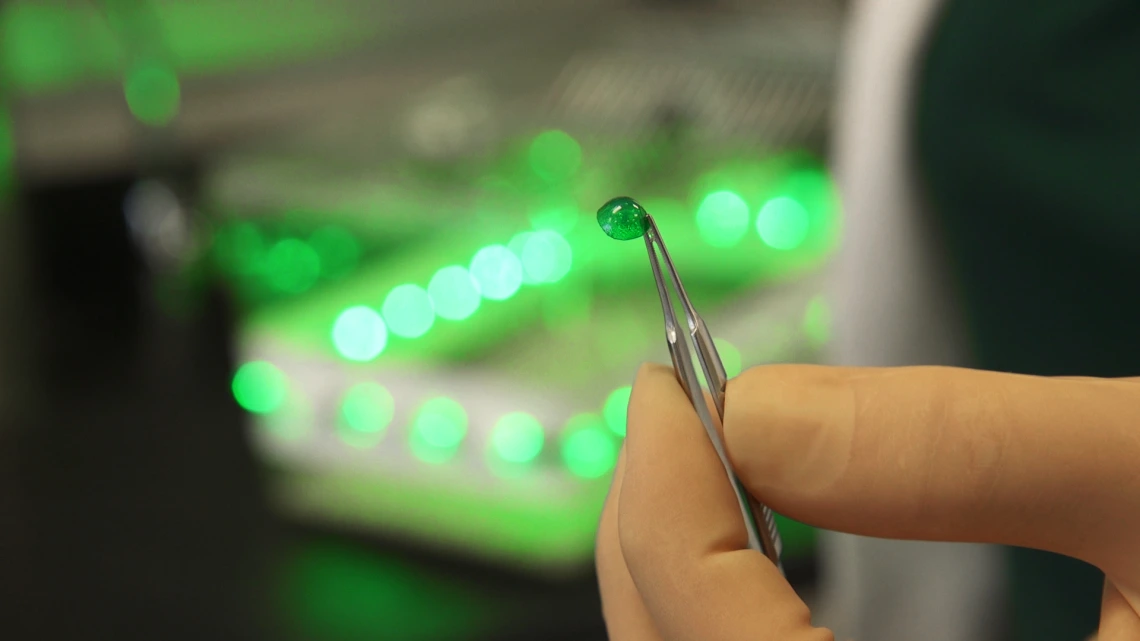Tech Blog: Use of Green Light Therapy as an Alternative to Opioids for the Management of Chronic Pain

Over one million adults suffer from chronic pain the United States alone [1].
Chronic pain differs from acute pain in that chronic pain is persistent and can last for weeks, months or even years [2]. This type of pain, which occurs most commonly in the lower back, head and neck, can result from a previous injury or infection, an ongoing cause of pain (cancer, arthritis, etc.), or in the absence of any injury or damage to the body at all [2]. Of those suffering from chronic pain, women have a greater risk of developing chronic pain conditions and feel pain more intensely [1].
|
Published on the University of Arizona news website on February 28, 2017, this video provides interviews with Dr. Ibrahim about the technology. This video was created by UANews. |
The most common method of managing pain is the use of opioids like morphine, oxycodone, and fentanyl. Unfortunately, these drugs are highly addictive, limited in quantity, expensive, and can result in a plethora of serious side effects and health risks. Direct medical costs, including those associated with opioids, coupled with the loss of productive time result in $560-$635 billion every year [1].
Determined to find a “safe, effective, available, and affordable alternative or complementary approach” to managing chronic pain, Mohab Ibrahim, Ph.D., M.D., conducted a study utilizing non-invasive, low-intensity light on rats. Dr. Ibrahim, who directs the Comprehensive Pain Management Clinic and is an assistant professor of both anesthesiology and pharmacology at the University of Arizona, conducted simultaneous phototherapy procedures, which either exposelow-intensity intensity green light or fitted them with specialized contact lenses to allow only a certain wavelength to pass through them. Rats that were only exposed to green light or were wearing green contact lenses exhibited less pain behavior under different tests.
Ultimately, Dr. Ibrahim concluded that the exposure to the green light completely reversed chronic pain, saying that, “green light offers such promise in animal models and preliminary data suggests that green light therapy may be effective in humans as well.”
The potential for efficacy in humans is promising because of the technology’s non-invasive nature and opioid equivalent efficiency without the harmful side effects and addiction probability. To demonstrate this, Dr. Ibrahim has conducted a 10-week clinical trial in humans and shared that his review of the initial results were positive, with one participant saying, “shortly after I began the trial, I noticed that my overall pain level was less, my attitude had become happier, and life was better in general.”
In addition to conducting an ongoing clinical trial, Dr. Ibrahim is working with Lisa Lin, TLA’s licensing manager for the College of Medicine, to further discover the potential commercial impact of this technology.
UPDATE, 3/2/17: This technology has been licensed.
To learn more about other pain management related technologies from Tech Launch Arizona, please visit:
- Allosteric Antagonism of Calcium Channels with Small Molecules for Relief of Neuropathic Pain (UA16-145)
- PAR3 Inhibitors as Therapeutic for Pain (UA16-176)
References:
[1] Pain In America [Infographic outlining American chronic pain statistics and facts.]. (n.d.). Retrieved November 16, 2016, from http://www.ninds.nih.gov/disorders/chronic_pain/NINDS-Pain-Infographic.pdf(link is external)
[2] Chronic Pain Information Page: National Institute of Neurological Disorders and Stroke (NINDS). (2016, August 12). Retrieved November 16, 2016, from http://www.ninds.nih.gov/disorders/chronic_pain/chronic_pain.htm(link is external)
[3] Mohab Ibrahim, PhD, MD. (n.d.). Retrieved November 16, 2016, from http://anesth.medicine.arizona.edu/faculty/mohab-ibrahim-phd-md

